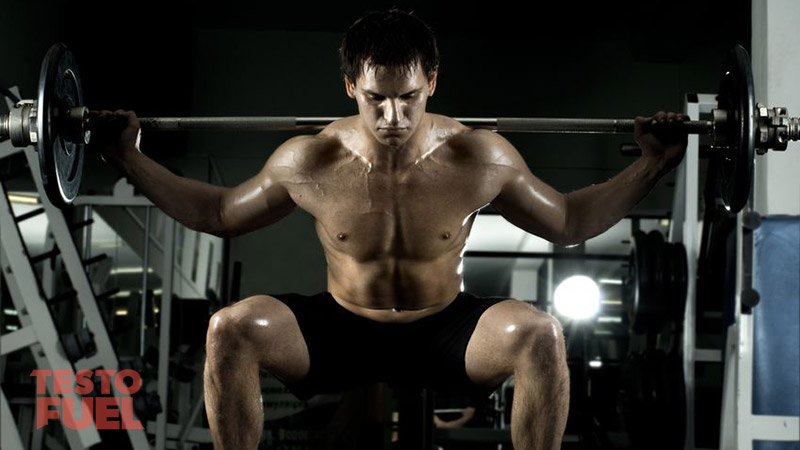TestoFuel Blog : Make Gains & Pack on the Muscle

We have all heard the saying ‘ass to grass‘ when performing the squat, no one wants to perform a shallow squat and look like a novice in the gym. More importantly what you are really after is getting jacked, having the right technique is a solid platform because:
This causes an anabolic (muscle building) hormonal surge throughout the whole body. However poor squatting technique can limit the overall result.
This short guide will teach you the basics of the squat, and how to get those thick strong legs while also ramping up your testosterone levels.
Here are the classic problems most guys experience while squatting and the best ways to solve them quickly.
Let’s begin by discussing the lower back, it is within this region that the nerves are located which control your lower extremities. This region of your spine should have a natural soft ‘S’ shape while squatting. Over, or under-arching here could:
Consequently this may have a negative impact on the proper function of the lower extremities; especially when squatting. This is caused by your nervous system not operating to its full potential or capacity. Also bear in mind that this could be further compounded by an abnormal spread of weight within this region via:
Strengthen your core and lower back muscles by:
For the vast majority a simple tweak in terms of the flexibility of the hip flexors can help you tremendously. In today’s modern society sitting down is the norm, especially when working.
This has an adverse effect on your muscles in the hip region by:
Unfortunately this scenario can inhibit lowering your butt to the ground when executing the squat.
Have a look at your toe alignment, if they are pointing slightly outwards, then this may be a sign of problems within your pelvic musculature. You should:
Having the right knee alignment does help you to keep your proper form whilst squatting; thus preventing any further pressure on the joint and subsequent injuries. The issues arise in your knee from:
This sequence of muscle activation can lead to knee pain, as this pulls the joint outwards and will buckle under pressure when squatting. Observe the following:
The back, hip and knees can play a pivotal role in your success rate when performing a deeper squat. The connection between squats and testosterone production is all about the depth that you get on the squat, the more testosterone will be secreted throughout the body via a higher amount of muscle fiber recruitment in the glutes and hamstrings.
Always make sure you have good form, and never compromise range of motion for a heavier weight. The only benefit this will have is on your ego.
If you want to see even stronger lifts, and command even more from your testosterone levels, you need to try TestoFuel.
TestoFuel is the ultimate anabolic support complex, and an all-natural supplement comprised of carefully selected nutrients which boost your testosterone. Supplying your body with the nutrients it needs, TestoFuel boosts the male hormone in your body allow you to gain more muscle mass, improve your lifts and recovery rate in a far faster time.